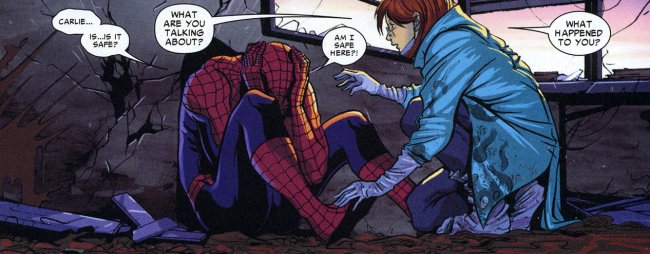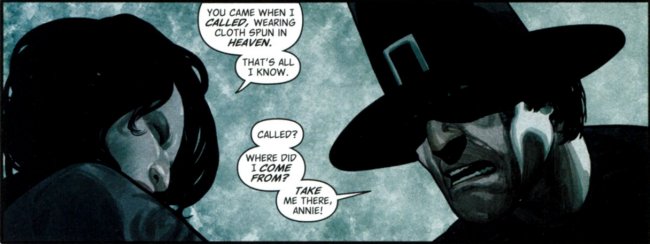I quit the Avengers books. Bendis’s plotting was dragging, Dark Reign was bugging me, and I was honestly bored since some point around the middle of Secret Invasion. Billy Tan on art didn’t help. I also quit pretty much every DC comic. I love Jimmy Palmiotti, Justin Gray, and Amanda Conner’s Power Girl, and I check in on Batman & Robin once in a while (when Quitely and Stewart are on art, mainly), but that’s where it stops.
I didn’t quit Marvel’s cosmic books.
Over the past four years, Dan Abnett and Andy Lanning, with a strong assist from Keith Giffen, have quietly carved a stale and stagnant corner of the Marvel universe into a vibrant and fascinating sub-franchise. I’m not particularly a sci-fi guy, but DnA have written some frighteningly consistent books over the past four years, ones of such great quality that when you get an issue that’s merely “good,” you feel a little disappointed.
Ed Brubaker’s Captain America is a consistently good comic. Good, but a little too much of the same thing, month-in, month-out. You run out of things to talk about. Not so for this cosmic stuff. DnA plugged several shake-ups into their plotting, keeping their heroes rocking from status quo to status quo without feeling jarring. It fits together almost like a series of movies. You can hop in wherever you like, though some points are obviously better than others. But that’s okay. I’m here for you. Let’s talk about lame characters gone good, terrible concepts turned interesting, and nobodies turned heroes.
Let’s talk about outer space.
Annihilation
It began with Annihilation. An army of bug monsters from space, the Annihilation Wave, set about the destruction of all that is not them. The story is one thing. What’s important here are the characters.
There is Thanos. He was born on Titan, Saturn’s moon, to a race of godlike beings. He was born twisted and deviant, and lusts after the personification of Death. He’s committed genocide and attempted omnicide to gain Death’s favor, to no avail. When Death senses the Annihilation Wave coming, she describes it as “something wonderful.” Thanos allies himself with Annihilus so that he can partake and impress his love.
Drax the Destroyer used to be strong and dumb, an outer space version of the Hulk. Then, he died. When he came back, he was lean, smarter, and less strong, but doubly lethal. Drax was created for one reason, and one reason only: to destroy Thanos. The need to wipe Thanos off the face of the universe is in his genes. That is his goal, and when faced with his target, he can’t help but pull the trigger, and damn the consequences.
Before Drax was Drax, he was Arthur Douglas, father to Heather Douglas. On a trip through the desert, the Douglases witnessed Thanos landing in a spacecraft. Deciding to preserve his secrecy, the Mad Titan blasted their car. The blast instantly killed Heather’s parents and accidentally threw her clear. Thanos’s father took Heather to his homeworld and trained her to be one of them. Now she is Moondragon, a master martial artist, telepath, and scientist.
Imagine being the child of the greatest hero in space. Now, imagine being the genetically-grown kid sister of the heir to that legacy. And then, imagine that heir dying, and being the only one left alive to continue the family business. Phyla-Vell of the Kree, daughter of Mar-Vell, better known as Captain Marvel, knows exactly how that feels. Her father was a hero. She is nowhere near as popular. When Moondragon, her girlfriend, is kidnapped by Thanos, she’s forced into the spotlight.
The Silver Surfer, Norrin Radd, is a former herald of Galactus, the world-eater. He has little interest in seeking out worlds for his former master to find, but once Annihilus’s forces begin attacking Galactus’s heralds in an attempt to secure and weaponize Galactus himself… well, the Surfer is forced to make a decision.
Ronan the Accuser is a Kree warlord with a giant hammer. Desperately loyal to his people, even when placed on trial for treason, Ronan is forced to battle his own government to prove his innocence and expose the rot inside the Kree empire. When you are accused of a crime by Ronan, it is best to simply take what’s coming to you.
Unless you are Gamora, the most dangerous woman in the universe. She is Thanos’s adopted daughter, and part of a race with the unlikely name of “Zen Whoberi.” Thanos raised her to eliminate the Magus, the evil aspect of Adam Warlock. She worked with and for Thanos for years, and betrayed him when he revealed himself to be a threat. Lately, she’s been mind-controlled and her reputation has diminished. With the aid of Godslayer, her newfound sword, she wants to get back out there and make people fear her name once again.
Adam Warlock is the messiah. No, really. He’s here to save us all. The problem is that at some point in the future, he becomes the Magus, a religious demagogue, and works to enslave the universe. His loyalties shift and blur because of this, making him particularly untrustworthy. Messiah or doom–which is it?
Imagine Peter Parker joining the Green Lantern Corps and you have the basic building blocks of Richard Rider, better known as Nova, the Human Rocket. He has more or less the same origin as Hal Jordan, but at the point Annihilation begins, he’s just a foot soldier. He’s five years in to being a Nova Centurion, one of thousands, but forty-eight pages later, he’s the only one left. And since the Nova power is shared amongst the entire Nova Corps, what happens when Rich is forced to contain all of it? What happens when you send a man to war?
That’s all you need to know to get started. The story begins in Annihilation, which is composed of three volumes (Book 1 , Book 2
, Book 2 , and Book 3
, and Book 3 ). Annihilation tells the complete tale of the Annihilation Wave, as well as laying the foundation for the revamping of Marvel’s cosmic universe. Later was Annihilation Conquest, which told of an opportunistic invasion by a crappy X-Men villain turned fearsome. This was collected in two volumes (Book 1
). Annihilation tells the complete tale of the Annihilation Wave, as well as laying the foundation for the revamping of Marvel’s cosmic universe. Later was Annihilation Conquest, which told of an opportunistic invasion by a crappy X-Men villain turned fearsome. This was collected in two volumes (Book 1 and Book 2
and Book 2 ), and told the story of a race that was bent on turning sentient beings into slaves. Annihilation Conquest set up two series. Guardians of the Galaxy
), and told the story of a race that was bent on turning sentient beings into slaves. Annihilation Conquest set up two series. Guardians of the Galaxy was about a group of heroes who banded together to protect the universe from an oncoming threat. The galaxy had been rocked by two incredible threats, back to back, and enough was enough. Someone had to put a stop to it. In Nova
was about a group of heroes who banded together to protect the universe from an oncoming threat. The galaxy had been rocked by two incredible threats, back to back, and enough was enough. Someone had to put a stop to it. In Nova , Rich Rider is faced with the daunting task of rebuilding the Nova Corps from scratch and policing a galaxy on his own.
, Rich Rider is faced with the daunting task of rebuilding the Nova Corps from scratch and policing a galaxy on his own.
While all this was going on, a mad earthling assumed control of the Shi’ar empire, a race of bird people. Others did not take kindly to this, which led to the War of Kings . The aftermath of the war, called Realm of Kings, left a hole in space, and that hole leads to something akin to hell. In another universe, life has completely defeated death. Lovecraftian elder gods and infected versions of heroes we know lurk in the darkness, waiting for their chance to push through.
. The aftermath of the war, called Realm of Kings, left a hole in space, and that hole leads to something akin to hell. In another universe, life has completely defeated death. Lovecraftian elder gods and infected versions of heroes we know lurk in the darkness, waiting for their chance to push through.
At this point, DnA are dragging the cosmic heroes into another catastrophe. Their solo series are on hold for The Thanos Imperative. The Mad Titan is back, pissed, and stronger than ever before. Complicating matters is the incursion of the Lovecraftian monsters from the other universe, but when you pit the ultimate manifestation of life gone wild against a god who worships Death herself… well. We’ll see.
I can’t stress how solid DnA’s cosmic work has been. They’ve taken perennial z-listers like Star-Lord and Nova and turned them into multifaceted, interesting characters. They’ve taken goofy concepts like Annihilus and the Phalanx and made them into believable threats. And they have done it month-in, month-out, since 2006.
That kind of dependable quality isn’t anywhere else in comics right now, save for Mike Mignola and John Arcudi’s BPRD. This cosmic stuff where the great stuff is hiding out at Marvel right now. There have been a few mis-steps. CB Cebulski’s two-issue Darkhawk miniseries was perfect deleted scene material and entirely missable. Some of the art has been questionable, but never for too long. But, if you don’t read Marvel, or you don’t read this part of Marvel, you’re missing that good stuff. Get familiar.



